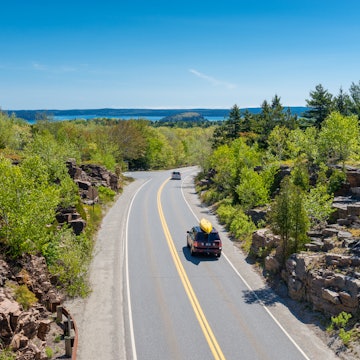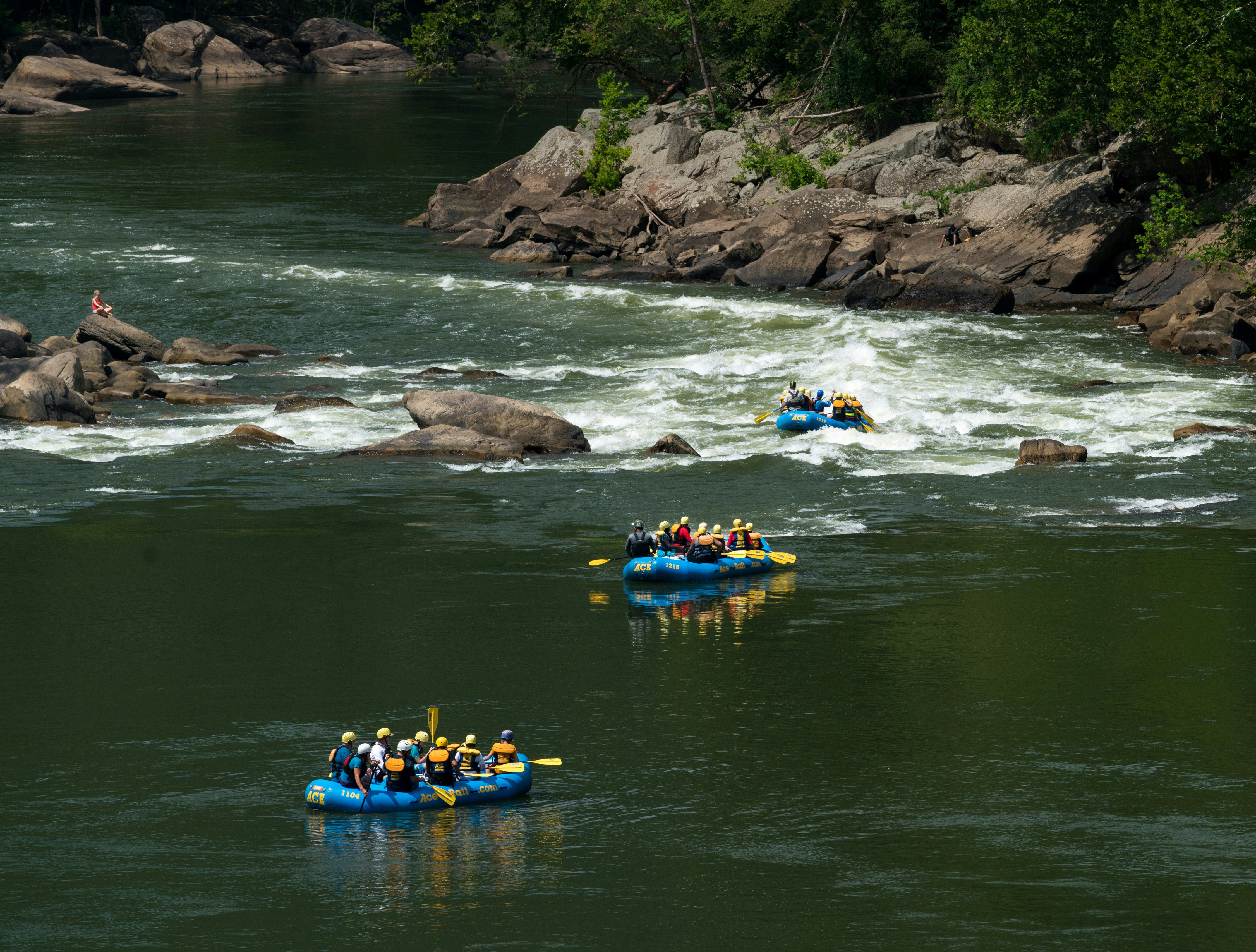

Sunrise at Old Rag Mountain in Shenandoah National Park. Mark Widder/Shutterstock
By numbers alone, the National Park Service crowns the Western USA as the champion of the great outdoors, with the bulk of the country’s national parks clustered in California, Utah and neighboring states. From Virginia up to Maine, only three national parks surface in the service's Northeast region, but with ethereal cliffsides, waterfront trails, and wild mountaintops, there’s no inferiority complex here.
Visit any of the Northeast's national parks to sample some of the area’s best scenery, often coupled with a quietude that’s less prevalent in better-known parks in the West. In addition to the trio of designated national parks, the Northeast includes dozens of other National Park Service sites, from preserved battlefields and historic landmarks to scenic routes.
Due to staffing cuts, the National Park Service is stretched this year. Travelers can expect longer wait times, fewer services and the potential closures of certain sections. Stay prepared and, no matter where you go, make sure to leave no trace – though all it takes is one outstanding park experience for your trip to leave a trace on you.

1. Acadia National Park, Maine
Best for coastal scenery
Look at one photo of Acadia and you’ll understand why Maine’s only national park attracts nearly four million annual visitors. Acadia’s roughly 50,000-acre footprint unites the East Coast’s most dramatic landscapes, leading visitors past oceanfront lighthouses and up jagged peaks canopied by pine trees.
If you’re looking to swim, the water at Maine’s beaches never quite heats up, though that shouldn’t deter you from taking a dip at Sand Beach. There’s nothing more invigorating than diving into the lapping waves, then lounging on the sand. The parking lot fills up quickly, however, so go early to avoid roadside parking. For hikers, save that early morning time slot for a trip up Cadillac Mountain. The moderate hike takes a few hours, or you can drive to the popular viewpoint.
Given the emphasis on the outdoors, Acadia offers the most activities in the summer, but for a different kind of adventure, consider a winter road trip. You’ll have to plan carefully – some roads and facilities shutter in the offseason – but Acadia’s roads give way to some of the country’s most spectacular cross-country skiing.
Visiting Acadia: To combine your hike with water activities, base yourself in Bar Harbor. At low tide every day, you can walk along an emergent sandbar to Bar Island and scour tidal pools for crabs. From there, it’s easy to access Acadia using the Cadillac Mountain entrance from Eagle Lake Road.

2. Shenandoah National Park, Virginia
Best for a city day trip
You may associate Virginia with the South, but the National Park Service categorizes the state under its Northeast umbrella. Shenandoah is one of the most accessible national parks in the country, roughly an hour and a half outside Washington, DC. However, don’t let the park’s proximity fool you into thinking that it might somehow be less worthy. Shenandoah replaces the capital city's cosmopolitan attractions with the stunning, serene Blue Ridge Mountains. You can spot everything from black bears to Shenandoah-specific salamanders in the 200,000-acre park.
Some 500 hiking trails weave across that acreage, too, though if you’re not up for walking, you can opt for horseback. You’re in Virginia’s horse country after all. Waterfalls characterize Shenandoah, and day-trippers can finish the crowd-favorite Dark Hollow Falls Trail in just over an hour.
Visiting Shenandoah: Among the most popular Shenandoah hikes, Old Rag requires visitors to purchase a US$2 pass at least one day in advance. The strenuous, daylong hike covers a variety of trails with different levels of rock scrambling.

3. New River Gorge National Park and Preserve, West Virginia
Best for extreme sports
New River Gorge officially refers to the eponymous river that intersects West Virginia's Appalachian Mountains, but the park’s elevation to national park status in 2020 adds another level of newness. The 63rd park in the system, New River Gorge is crossed by the towering New River Gorge Bridge, one of the country’s highest.
The fast-flowing waters are a popular white water rafting destination, with varying levels of intensity – both novice adventurers and extreme athletes can find the right amount of churn. Boulders simultaneously present ample rock climbing opportunities. If you’re new to either sport, book a guided tour for maximum safety.
Visiting New River Gorge: You can only tent camp within New River Gorge, so if you prefer a sheltered campsite or amenity-driven stay, base yourself in Fayetteville: a cozy, cool town, mere miles from the park.

4. Harriet Tubman National Historical Park, New York
Best for contextualizing history
In New York’s Finger Lakes region, the Harriet Tubman National Historical Park maintains the home, church and burial grounds of Harriet Tubman, elucidating key moments in abolitionist and feminist history. Prebook a guided tour of Tubman’s Auburn home – or guide yourself around the grounds – and you’ll gain deeper insights into America’s past.
Although plenty powerful on its own, this site is but a piece of the state's wider significance in broad equality movements. Pair your visit with a trip to the Women’s Rights National Historical Park in nearby Seneca Falls. Then head north to Rochester, where you can visit the home of Susan B. Anthony, as well as her grave (and that of Frederick Douglass) at Mt Hope Cemetery. If you’re driving south, stay a night in the home-turned-bed-and-breakfast of Belva Lockwood: the first woman to practice as a lawyer before the U.S. Supreme Court.
Visiting Harriet Tubman National Historical Park: Because you’ll be in Finger Lakes wine country, cozy up to a glass of Riesling at Cayuga Lake’s waterfront Inns of Aurora Resort & Spa.

5. Appalachian National Scenic Trail, multiple states
Best for overnight hikes
I went to college on the border of Vermont and New Hampshire, and from the center of campus, I’d frequently watch backpackers pop out of the woods. They were traversing the intersecting stretch of the Appalachian Trail: the roughly 2100-mile route that passes through 14 states. Finished in 1937, the trail extends from Georgia to Maine, but much like Spain’s Camino de Santiago, it allows for both long-term pilgrimages and section hikes of shorter lengths.
For a difficult but rewarding hike, try New Hampshire’s Presidential Traverse, which will lead you above the White Mountains’ treeline. The 18.5-mile route can take between one and three days, so if you’d rather something quicker, New Jersey’s milder Stairway to Heaven makes for a shorter (3 miles) scenic day hike.
Visiting the Appalachian Trail: If you’re camping without hiking the entire trail, it’s good etiquette to save the trail’s shelters for through hikers. Make sure to bring a tent and abide by each area’s respective camping regulations.

6. Gettysburg National Military Park, Pennsylvania
Best for year-round family trips
The dedication of the battlefield at Gettysburg in Pennsylvania occasioned President Abraham Lincoln’s famous address in 1863. When visiting Gettysburg National Military Park, you can drive through the grounds by car or on a bus tour and observe the hills, rocks and landmarks once used by soldiers as protection. Tours provide just the right amount of information, making Gettysburg an educational stop for children and adults interested in American history.
Visiting Gettysburg: Of all the national parks on this list, Gettysburg is the least weather dependant. Beyond driving through the battlefield, indoor activities include the visitors center museum, the house of David Wills (where Lincoln penned part of his Gettysburg Address) and President Dwight Eisenhower’s home.
















